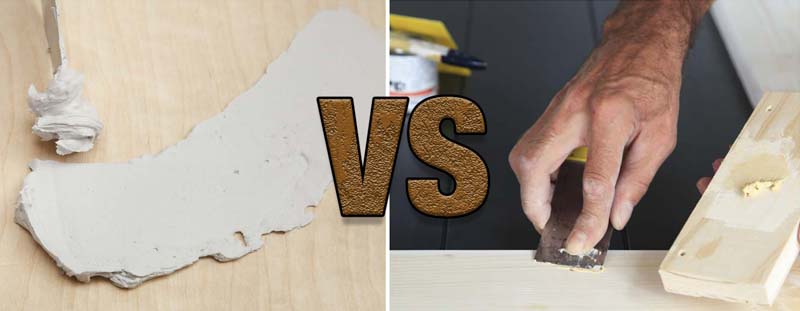Understanding the difference between wood putty versus wood filler is essential if you want to get professional results. Choosing the right product can be a little confusing because there are so many types, and sometimes the way they are marketed makes it hard to tell them apart. Selecting the right wood filler depends on the specific needs of your project, and, more specifically, understanding wood putty vs. wood filler.
While wood putty and wood filler share some similarities, they’re actually two very different products. In this guide, you’ll learn all you need to know about wood putty vs. wood filler, as well as how to tell them apart and understand when to use each one.
Understanding Wood Putty vs. Wood Filler
You can easily mold wood putty, and it’s the best product for filling cosmetic holes. On the other hand, wood filler dries stronger and is a better option for structural repairs.
What is Wood Putty?
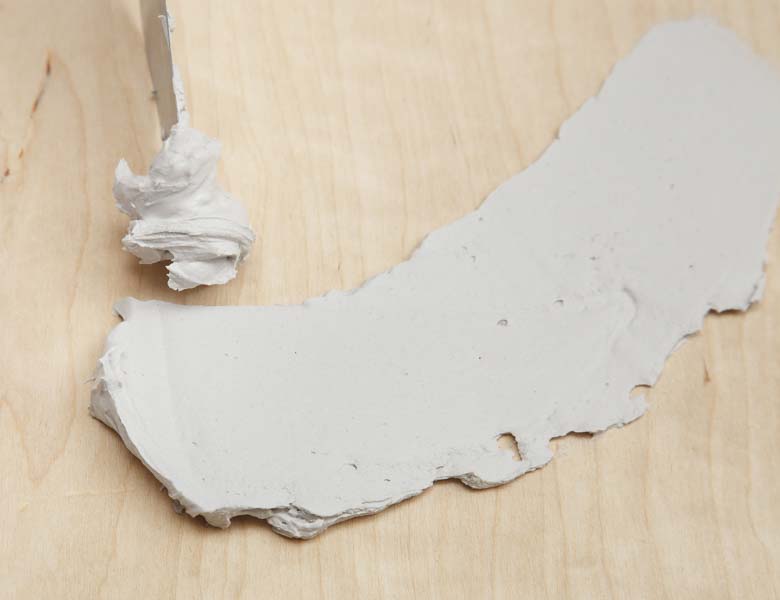
You can use wood putty (or plastic putty) to fill small imperfections in finished wood. It’s available in various tints that you can match to your project. Once applied, it takes longer to harden than wood fillers.
What is Wood Filler?
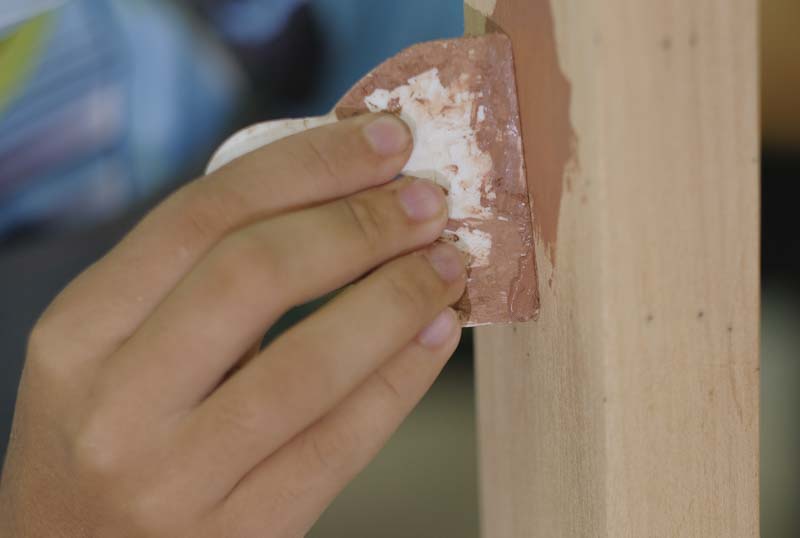
Wood filler (or woodgrain filler), is good for filling larger gaps and voids in unfinished bare wood. It typically comes in brown wood tones, but may also be white or gray. Wood fillers dry to a hard finish, often ready to sand in less than an hour.
Key Differences Between Wood Putty and Wood Filler
While they have similar names and work well in making repairs to wood projects, there are some key differences between wood putty and wood filler.
Material Composition
The main difference between wood filler and wood putty is what they’re made of. Wood putties are plasticized. Manufacturers make them from a combination of fine wood dust, a binder, a thinning agent, and pigments.
When it comes to wood fillers, there are several types. You can make your own from fine sawdust and wood glue, such as Titebond III, or buy one that’s ready-made. Commercial wood fillers have different combinations of binders, solvents, and bulking agents.
The two main types of wood fillers are water-based and oil-based.
Water-based wood fillers
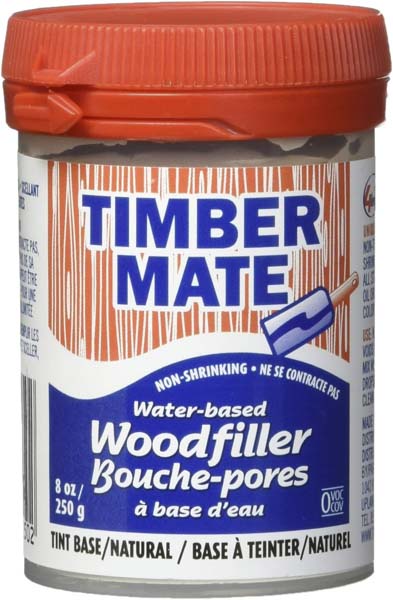
With water-based fillers like Timbermate Wood Filler, the primary solvent is water. Many water-based wood fillers are crumbly, but you can add a small amount of water to make them easier to spread. They are faster drying and accept stains easily.
Oil-based wood fillers
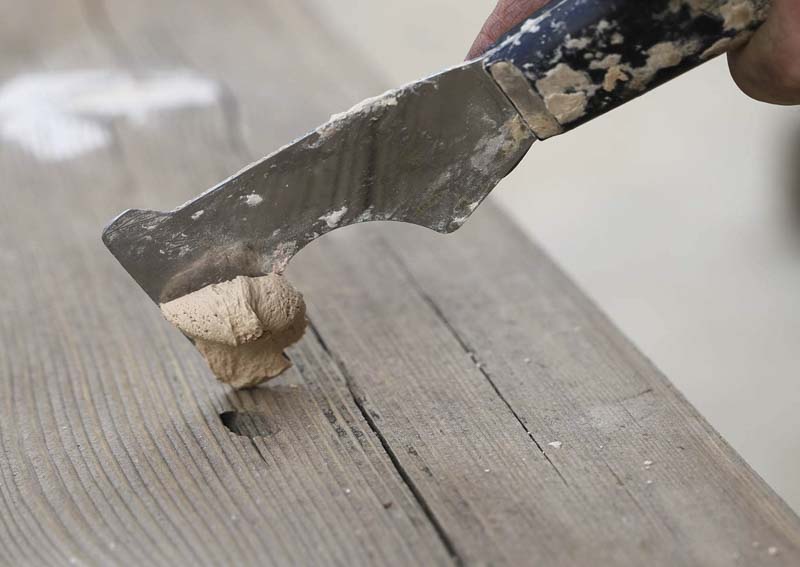
Solvent-based wood fillers have a smoother texture and are typically easier to spread than water-based ones. They have more VOCs and require a solvent for cleanup. Sandable wood filler products like Famowood dry in about 15 minutes.
Flexibility and Hardness
If you’re looking to cover up small scratches and imperfections, wood putty is flexible and easy to work with. If you’re working with bare wood and need it to be strong, wood filler is the better choice.
Pros and Cons of Wood Putty
Explore the benefits and drawbacks of wood putty.
Advantages of Wood Putty
The best thing about wood putty is that it’s easy to apply. Its pliable consistency makes it easy to smooth, and you’ll have plenty of time to work it into place before it hardens.
Another advantage of wood putty is that it comes in a wide range of colors, and you can mix and match different colors to get the right shade for your project.
Disadvantages of Wood Putty
Wood putty is designed for cosmetic purposes and won’t add to the structural integrity of your project. It’s also prone to shrinking and cracking if applied too thick.
Wood putty is slow to dry. Most putties take at least 3 to 6 hours before you can sand them, and for deep fills over ¼ inch thick, you’ll have to wait about 36 hours.
Uses of Wood Putty
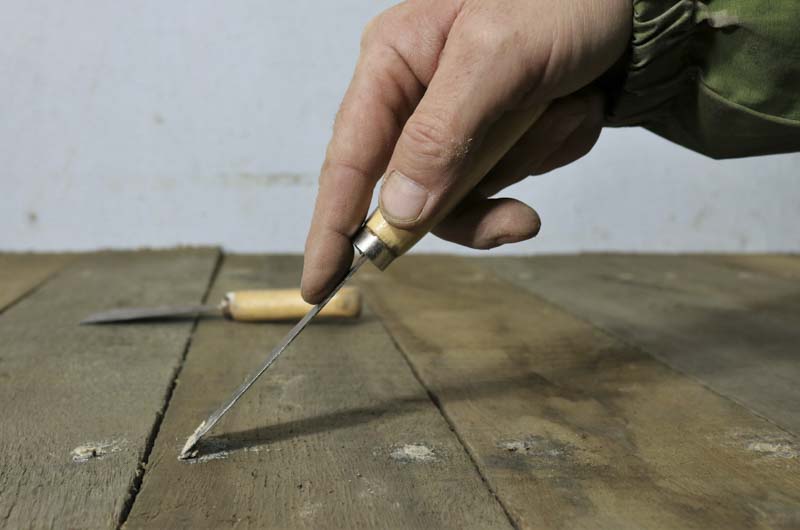
Use putty to fill holes in wood, like nails and screw holes. It’s the best choice for minor surface repairs and is effective for filling small gaps, divots, and cracks. Wood putty is a versatile product for finishing wood projects.
Pros and Cons of Wood Filler
Discover the advantages and disadvantages of wood filler.
Advantages of Wood Filler
Wood filler is the best product for filling large gaps, cracks, and voids because it won’t crack or shrink. It hardens better than putty, and if you’re repairing structural damage to wood projects, wood filler is the product you want to use.
Wood filler mixes well with stains, tints, and dyes. You can also apply it to bare wood, then sand and finish it. Quality wood fillers accept stains flawlessly.
Disadvantages of Wood Filler
Some wood fillers have toxic fumes, which can make application more challenging. Depending on the type of wood filler, it can be tricky to apply, and some types dry so quickly that achieving a smooth application takes some practice.
Uses of Wood Filler
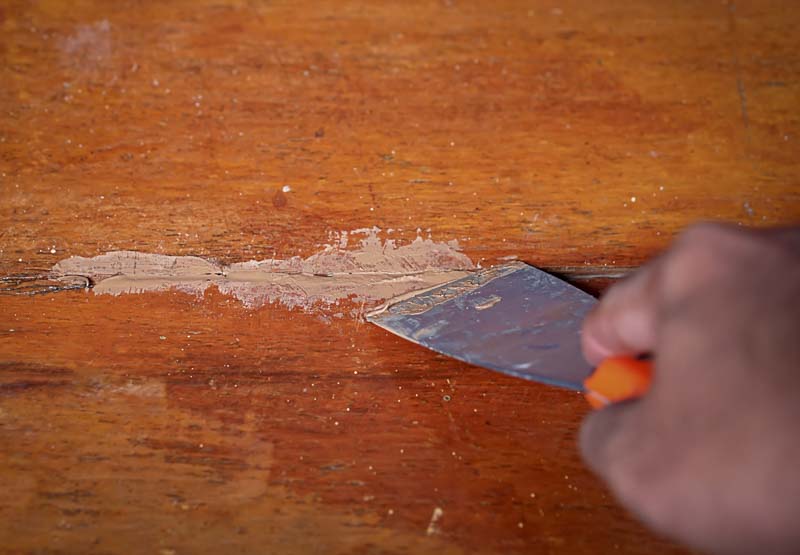
For substantial repair projects, wood filler is an essential item to have in your woodworking toolbox. It’s ideal for creating a smooth, durable surface and repairing large cracks.
The best product for repairing wood floors and furniture, wood filler is easier to sand and shape to get a polished finish for your woodworking project.
Ready to get to work on your floors? Explore our guides to the average cost of refinishing wood floors, the cost of installing a new one, and how to care for your wood floors.
Tips for Choosing Between Wood Putty and Wood Filler
Choosing between wood putty or filler can be confusing. Here are some more helpful tips to make it easier.
Project Requirements
What’s the scope of your project? Wood putty works fine if you’re filling in a few minor imperfections. Wood filler is a better choice if you’re trying to repair a broken chair.
Compatibility with Finishes
Consider the type of finish you’re going to use on your project. Use oil-based fillers for oil-based stains and water-based fillers for water-based stains.
Some wood fillers say they’re stainable, but in practice, they fail to work with some types of stains, so it pays to read reviews before you buy or test the materials before applying them to your project.
Skill Level
Wood putty is more user-friendly and forgivable, so it’s usually a better choice for beginners. Some wood fillers dry so quickly that they are better options for experienced woodworkers.
Additional Considerations When Choosing Wood Filler or Wood Putty
Here are some additional factors to consider when choosing the right wood filler or putty product.
Cost and Availability
Online shopping provides consumers with excellent options and availability. However, if you need a product immediately, you may have to choose from what’s available at your local hardware store.
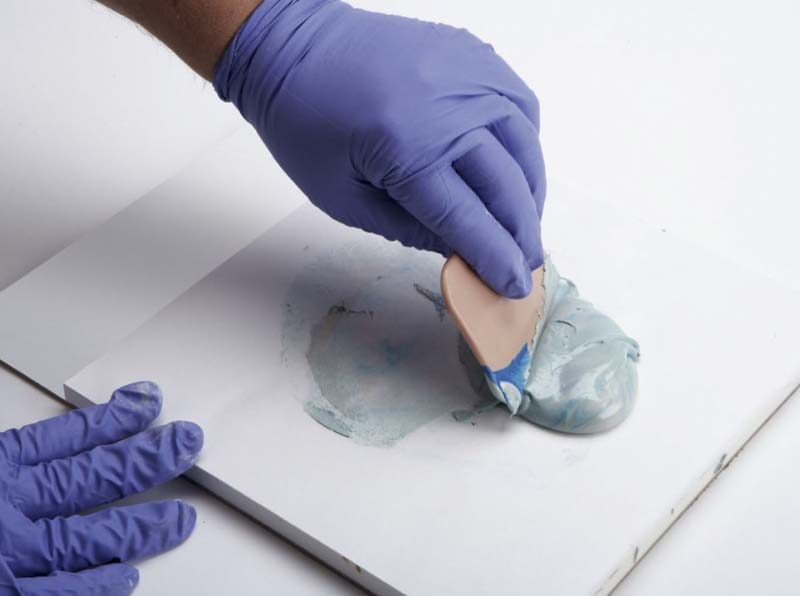
Wood putty is generally cheaper than wood filler. One of the least expensive options is Bondo All Purpose Putty. It’s versatile enough for you to use for home improvement projects, and it’s the best wood filler for predrilled screw holes.
Environmental Impact
Products with petroleum-based solvents are more toxic. If you’re looking for an eco-friendly wood filler, try Goodfilla’s Filla-in-a-Bag. It’s the only completely water-based wood filler on the market, and you can mix any amount yourself with the tint, dye, or stain of your choice, so there’s no waste.
Storage and Shelf Life
When properly stored, some wood putties will last up to 20 years. The average shelf-life for an opened can of wood filler is typically about one year.
Frequently Asked Questions (FAQs) About Wood Putty vs Wood Filler
Can I use wood putty and wood filler interchangeably?
Wood putty and wood filler are different products and aren’t intended to be used interchangeably. Use wood putty for filling minor holes and imperfections on wood that’s already finished, and use wood filler for cracks and voids in unfinished wood.
Is one product better for outdoor projects than the other?
Instead of looking for exterior wood putty, choose oil-based wood fillers, which are better than wood putty for exterior use. They’re more durable than water-based wood fillers or wood putty and will hold up better in exterior applications.
Are there any safety precautions to take when using these products?
You don’t have to worry about fumes or toxic vapors when using products like wood putty or putty pencils. These products are generally safe for indoor use. However, you must use safety gear, including gloves and a respirator, with solvent-based wood fillers. When working with products with VOCs, it’s also important to work in a well-ventilated area.
How do I select the right color or type for my repair?
There are many wood-filling products, and finding the right product for your project can be complicated, much less finding the right color.
Some wood fillers are easier to tint than others, and water-based wood fillers are one of the best choices for tintability because you can add most types of pigments to them. Another option is to add oil-based stains to solvent-based wood fillers to get the right color.
Can I mix wood putty and wood filler for a customized solution?
Generally, it’s not recommended to mix wood putty and wood filler. Some wood fillers are oil-based and won’t pair well with a plasticized wood putty, and there are better ways to get the result you’re looking for. If you’re trying to find the right color for a wood repair, a great option is to use burn-in wax sticks or crayons like SEISSO Wood Filler Sticks. They come in a pack of commonly used colors, and you can mix them to get the exact shade you need.

